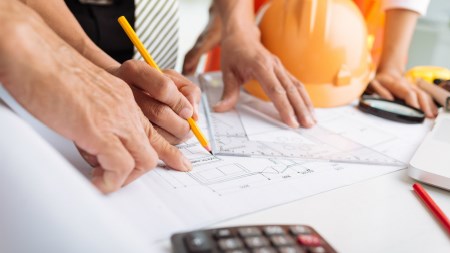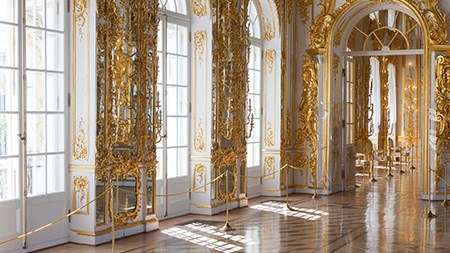Got space at home and looking for a way to generate a second income? Consider the benefits of adding a granny flat on your property.
It’s no secret that adding a granny flat or secondary dwelling to your home, holds some serious money making potential.
Especially in a time of high interest rates and tight budgets, building a granny flat can offer that little bit of extra financial freedom by generating additional cash flow through a rental income.
A granny flat also holds the potential to increase your property’s value, should you decide to sell your home one day.
And it is no longer a place just for granny. Granny flats have become popular among students and young professionals entering the workforce and seeking a place to rent.
The great thing about building a granny flat on your property is that it’s a small financial step in comparison to buying an investment home and you don’t need to spend more on purchasing the land, as you already own it.
if you're lucky enough to have the extra yard space and required capital, then consider these effective tips before taking the plunge:
What type of dwelling will you build?
Deciding on the type of granny flat to build is essential in order to ensure that you are building a structure that is government approved.
Different types of granny flats:
Detached granny flats: A secondary dwelling which is not connected to the main home and is usually a one- or two-bedroom flat, with a self-contained kitchen/dining area.
Studio granny flats: A secondary dwelling which is one large room that combines the living, sleeping and dining area and has a separate bathroom area.
Attached granny flats: A secondary dwelling which is connected to the main part of the home but is fully self-contained with its own separate entrance.
Is planning permission required?
For the construction of a separate, new building, receiving planning permission is a requirement. This can be achieved by appointing a qualified architect or draughtsperson to draw up and submit the building plans to your local municipal planning department. It is important to also consider the fee structure that the process entails. For smaller home alterations, a draughtsperson would be better suited and more cost-effective.
Consider your budget:
Knowing exactly how much you are able to spend on the granny flat is important, to ensure that the building plans are in line with what is realistically affordable.
A common mistake when allocating a budget is underestimating the cost of building a second dwelling.
It is essential to get a variety of building quotations in order to have a good estimate of how much you will be required to spend.
Don’t forget to factor in other additional costs into your budget. These include bathroom and kitchen fittings and fixtures, tiles, plumbing, electrical wiring and paint.
Deciding whether your granny flat will be partly or completely furnished, is another factor to consider before finalising your budget. This step is crucial in order to ensure you that you have sufficient funds to complete the job.
Pick your builder wisely:
Choosing the right builder is key a factor in making sure that the construction of your granny flat is a smooth and efficient process.
Ideally, the builder appointed should be registered with Home Builders Registration Council (NHBRC) to ensure that you are dealing with a certified contractor.
Attaining references of past work done is a great way to suss out the builder’s ability to get the job done.
It is advisable to take a close look at the contract and ensure that everything is clearly stated and in writing. In addition, keeping a written record of the project’s daily progress can also be beneficial.
Adding timelines with a penalty clause for not completing work on time is useful, as a lazy or disorganised builder can end up costing a lot more than the job he quoted for.
Deciding who will be in charge of sourcing the building materials is another factor to take into consideration.
Homeowners can take on the responsibility and shop around for the best deals, but this can however, be a time consuming process. Alternatively, the contractor can assume full responsibility of buying all materials required.
Comfort is key:
It is important to ensure that the granny flat is big enough in size and offers a sufficient level of comfort.
Consider an open plan living space as this makes smaller areas seem larger.
It is also advisable to build rectangular rooms as opposed to rooms that are intricate and sharp. Having too many corners or protrusive walls can make the dwelling hard to live and move around in.
Making wise bathroom choices:
It’s likely that the bathroom will be fairly small in size, so it’s important to use the bathroom space wisely.
Most home improvement stores have affordable, compact basins with accompanying cupboards to hold all essential bathroom items.
Consider installing a shower rather than a bath tub. Showers don’t only take up less space but they also use less water than bath tubs do.
Remember to shop around and compare prices. Don’t be tempted to overspend - rather hunt for good quality bargains like end of range tiles, which can add a classy touch without breaking the bank.
Neutral colours – the safe choice:
Neutral colours work best as they appeal to a large number of individuals.
There are many shades of white paint that have beige, tan, yellow, blue or green undertones that allow a room to look fresh, bright and clean, with just a touch of colour.
Darker colours are known to make rooms appear smaller than they actually are, even if they happen to be warm or cool shades.
Neutral colours on the other hand, such as cream, ivory and light beige are typically considered to be most relaxing and are the easiest for tenants to match their décor with.
Considering utility costs:
Electricity and water utilities are a significant cost for every home, which is why you should reflect carefully on how these costs will be accounted for in your granny flat.
For many landlords, apportioning electricity consumption can be a nightmare and can become problematic.
In order to avoid any unwanted disputes and excessive usage, it is advisable to consider pre-paid meters or at least a meter that allows you to track the electricity usage for the granny flat, separately from the rest of the property.
The benefits of going green:
Another great way to up the appeal of your granny flat and reduce living costs, is to make it eco-friendly.
Explore the options of a heat pump, solar geyser and geyser timer. Although this can seem expensive, it is an investment worth making, as the property market is becoming more competitive.
Going green is bound to pay off in the long term and it will make the flat more appealing to potential renters.
You don’t have to go all out - even minor changes like opting for energy saving light bulbs and LED lights can help to save on the electricity bill.
Safety and security features:
Safety measures are essential and can be a deal-breaker in determining the success of any rental home.
Consider installing sensor lights around the granny flat exterior.
Outdoor lighting is also important as you don't want a tenant to fall down a dark stairway.
Ensure that the pathways leading to the granny flat are flat or easy to navigate. Keep paving clear, and free of mould (which becomes slippery).
Having secure parking is also important. Consider adding a carport if you only have uncovered parking available.
For overall security, installing a separate alarm system for the granny flat is a consideration worth making. It may come at a cost, but good security is essential and will add to the overall appeal of your rental home.
Will you let it furnished or unfurnished?
Landlords are often confronted with the difficult question of whether they should lease out their property furnished or unfurnished.
The biggest difference between a furnished and unfurnished unit will be the initial and monthly cost.
Although choosing to furnish your second dwelling can prove to be a costly affair, you will however, be able to attain a higher rental for providing furnished accommodation.
Alternatively, choosing not to furnish your granny flat can save you a lot in upfront costs and can be a better choice for tenants who prefer to use their own furniture and integrate their own home style into the flat.
What rental will you charge?
The rental price you charge for your listing is completely up to you. To inform your decision about what price to set, consider having a look through the rentals listed on property portals, such as Private Property, in order to determine what rentals are being charged for similar cottages in your area.
Be sure to distinguish between furnished and unfurnished, serviced or not.
Having a couple rather than a single tenant is likely to increase the wear and tear of a flat, so be sure to factor in this extra expense when considering your rental price.
If you do your homework and plan well, you could create an excellent source of additional income while at the same time adding value and accommodation space to your home.



